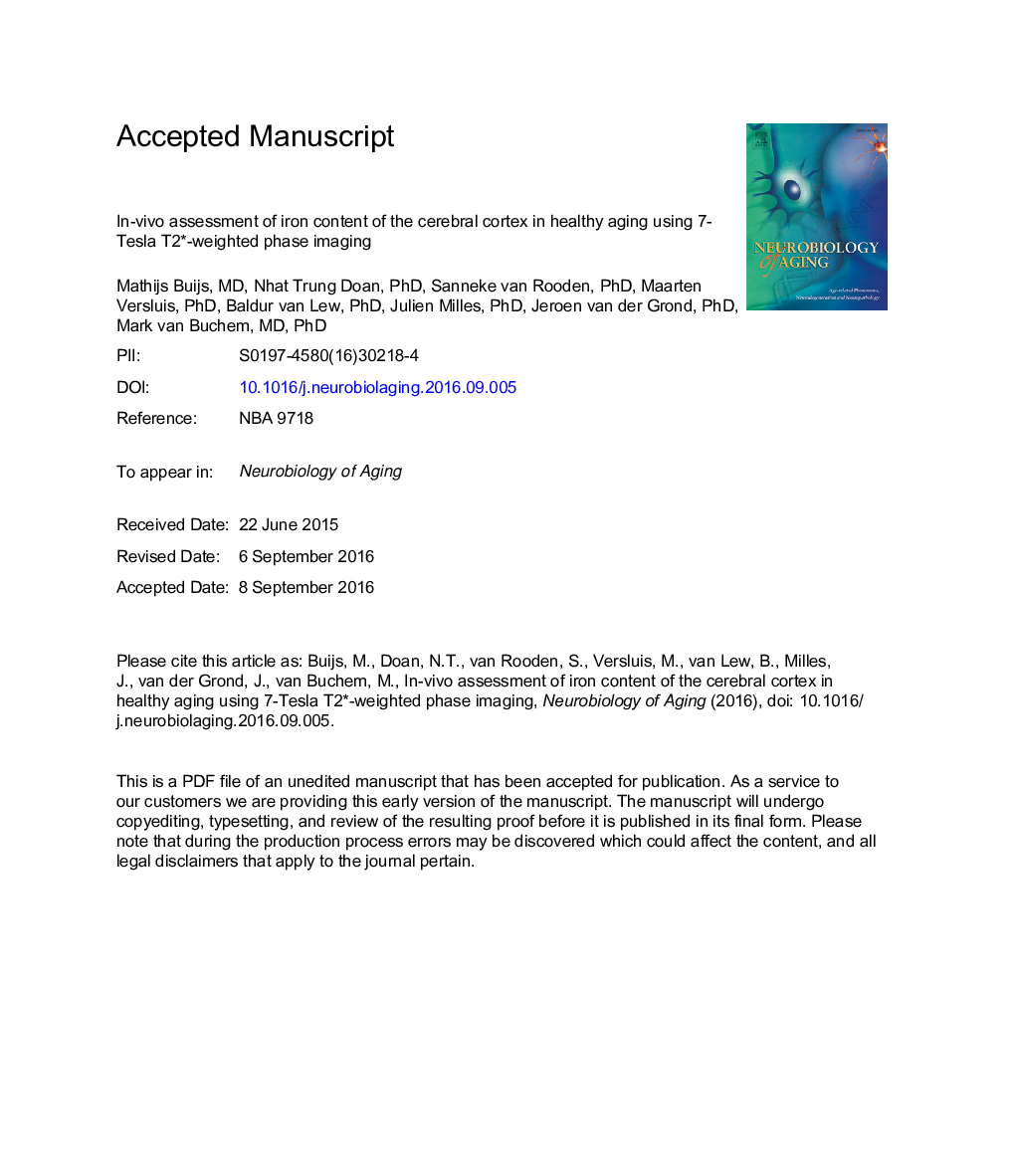| Article ID | Journal | Published Year | Pages | File Type |
|---|---|---|---|---|
| 4932604 | Neurobiology of Aging | 2017 | 28 Pages |
Abstract
Accumulation of brain iron has been suggested as a biomarker of neurodegeneration. Increased iron has been seen in the cerebral cortex in postmortem studies of neurodegenerative diseases and healthy aging. Until recently, the diminutive thickness of the cortex and its relatively low iron content have hampered in vivo study of cortical iron accumulation. Using phase images of a T2*-weighted sequence at ultrahigh field strength (7 Tesla), we examined the iron content of 22 cortical regions in 70 healthy subjects aged 22-80 years. The cortex was automatically segmented and parcellated, and phase shift was analyzed using an in-house developed method. We found a significant increase in phase shift with age in 20 of 22 cortical regions, concurrent with current understanding of cortical iron accumulation. Our findings suggest that increased cortical iron content can be assessed in healthy aging in vivo. The high spatial resolution and sensitivity to iron of our method make it a potentially useful tool for studying cortical iron accumulation in healthy aging and neurodegenerative diseases.
Related Topics
Life Sciences
Biochemistry, Genetics and Molecular Biology
Ageing
Authors
Mathijs Buijs, Nhat Trung Doan, Sanneke van Rooden, Maarten J. Versluis, Baldur van Lew, Julien Milles, Jeroen van der Grond, Mark A. van Buchem,
